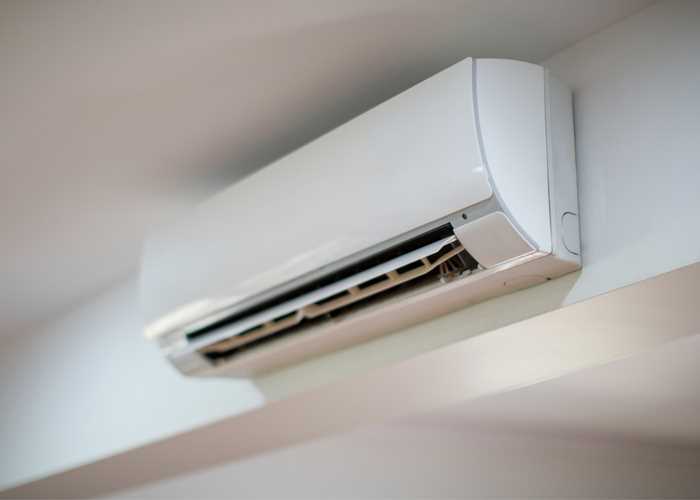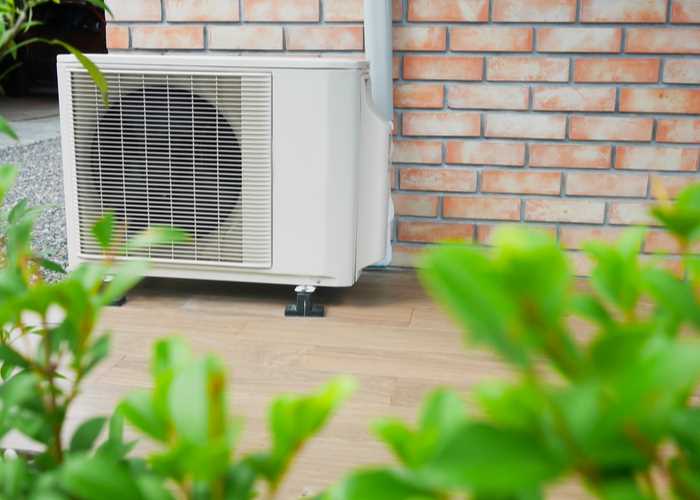Whether installed in the home, an office or a small commercial property, split type AC systems are made up of multiple parts that work collectively to deliver cool, filtered air into a building. When one of these parts runs into difficulty, it has a knock on effect for the entire process - lowering the overall efficiency of your system, or shutting it down completely.
In an ideal world, every AC engineer could be trusted to do exactly what needs to be done to fix any component problem. Sadly that’s not always the case, and it’s easy to fall victim to unnecessary repair bills.
One way to avoid this experience is to understand a little bit about the basic workings of your air conditioner, so here’s an overview of the parts that make up your split type system and what they’re responsible for.
Before we break it down into its component parts, let’s first take a look at a split system air conditioner as a whole.
This is the type of AC that best serves domestic settings, individual offices and small commercial spaces like independent shops and cafes. Systems can be installed as either single split or multi split:
Single split systems have one indoor unit connected to one external unit via piping and electrical wires.
Multi split systems have multiple indoor units connected to one larger external unit.
In both cases, different component parts play different roles in a process that forces a refrigerant to change its natural state from liquid to gas and back again, removing unwanted heat from indoor air as a result.
So, what are these individual parts, and what role do they play in the air conditioning process?

The indoor unit of a split type AC system is typically wall mounted. It’s here you’ll find:
The evaporator coil: usually made from heat conductive material like copper or aluminium, the evaporator coil connects to a condenser coil housed in the outdoor unit, with refrigerant running in a cyclical process from one to the other.
The refrigerant reaches the evaporator coil in its liquid form, at which point indoor air is drawn over the evaporator coil, and unwanted heat absorbed by the liquid refrigerant passing through it.
Issues such as increased energy consumption and system failure can occur if the evaporator coil is not kept clean.
Filters: the filters in your AC system remove particulates like dust, pollen and animal fur from your air supply, introducing a comfortable environment and promoting better health through improved air quality.
These filters will need cleaning or replacing at regular intervals in line with manufacturer guidelines, and should be addressed as part of a regular AC maintenance routine.

The external unit of a split type AC system is home to the ‘noisy’ components (though a correctly sized modern system shouldn’t cause any noise issues). It’s here you’ll find:
The compressor: as the refrigerant passes through the evaporator coil, it changes into a gas and is sent to the compressor. It arrives as a relatively cool, low pressure gas, and it’s the job of the compressor to force an increase in temperature and pressure to produce a hot, high pressure gas.
This is an integral part of the cooling process, so any suspected compressor malfunctions should be dealt with immediately.
The condenser coil: the hot, high pressured gas is then pushed to the condenser coil, where heat is extracted from the refrigerant and expelled outdoors. The refrigerant gas is condensed and becomes liquid again to start the process over.
In between the condenser and evaporator coils you’ll also find the expansion valve. This exists to remove pressure caused by the compressor and condenser coil, cooling the refrigerant so it is compelled to return to a gaseous state as it passes through the evaporator coil.
Whilst this is a very basic overview of the workings of split type AC, we hope it’s given you a better understanding of your system and the main components it’s made up of. We also hope it’s given you the confidence to question any repair recommendations made to ensure you only agree to work that is necessary.
At Loughborough Air Conditioning, we only ever work in the best interests of our customers. As members of the Government endorsed TrustMark scheme you can be sure that our technical competence, customer service and trading practices all meet the highest standards, and are regularly vetted as part of our ongoing commitment to excellence in service.
